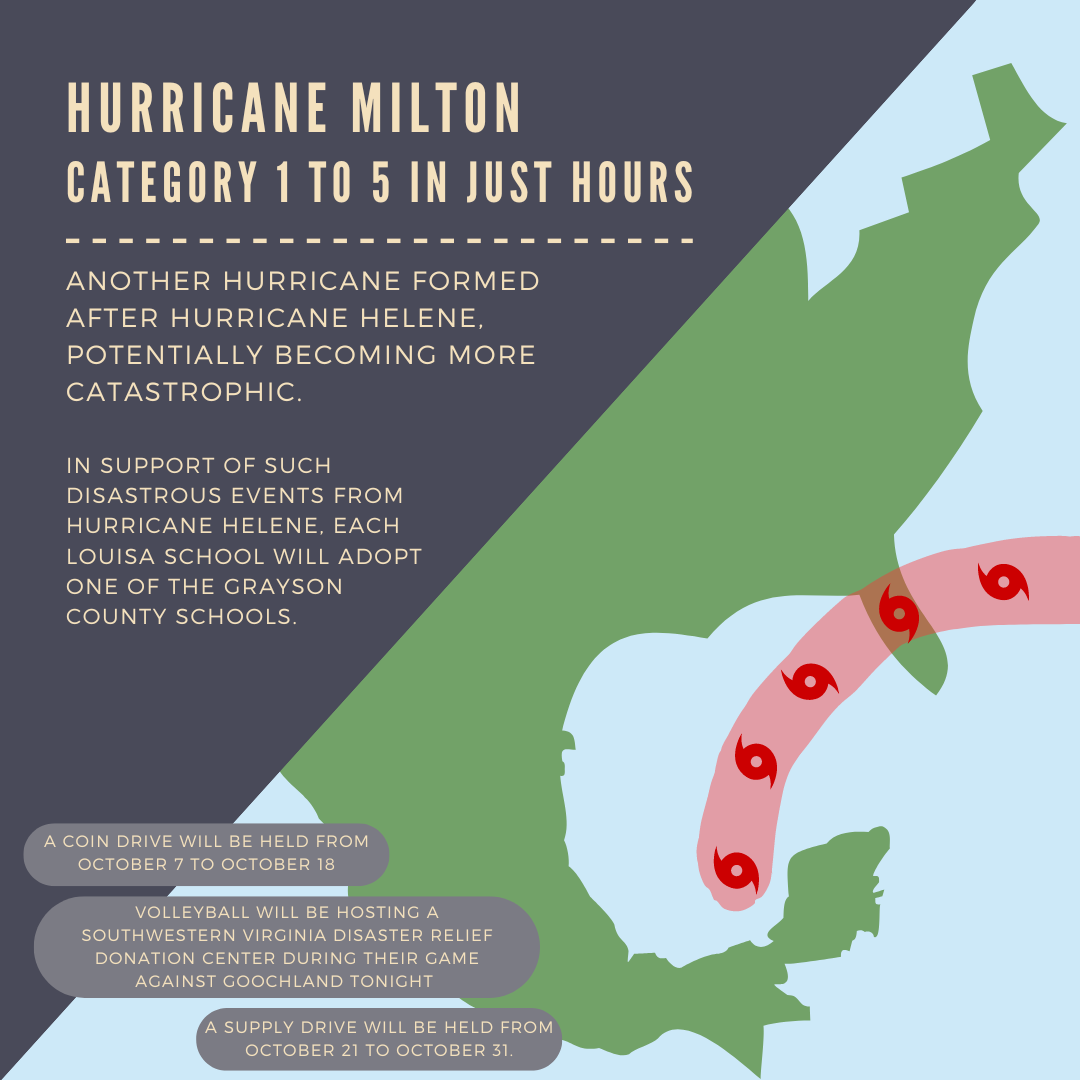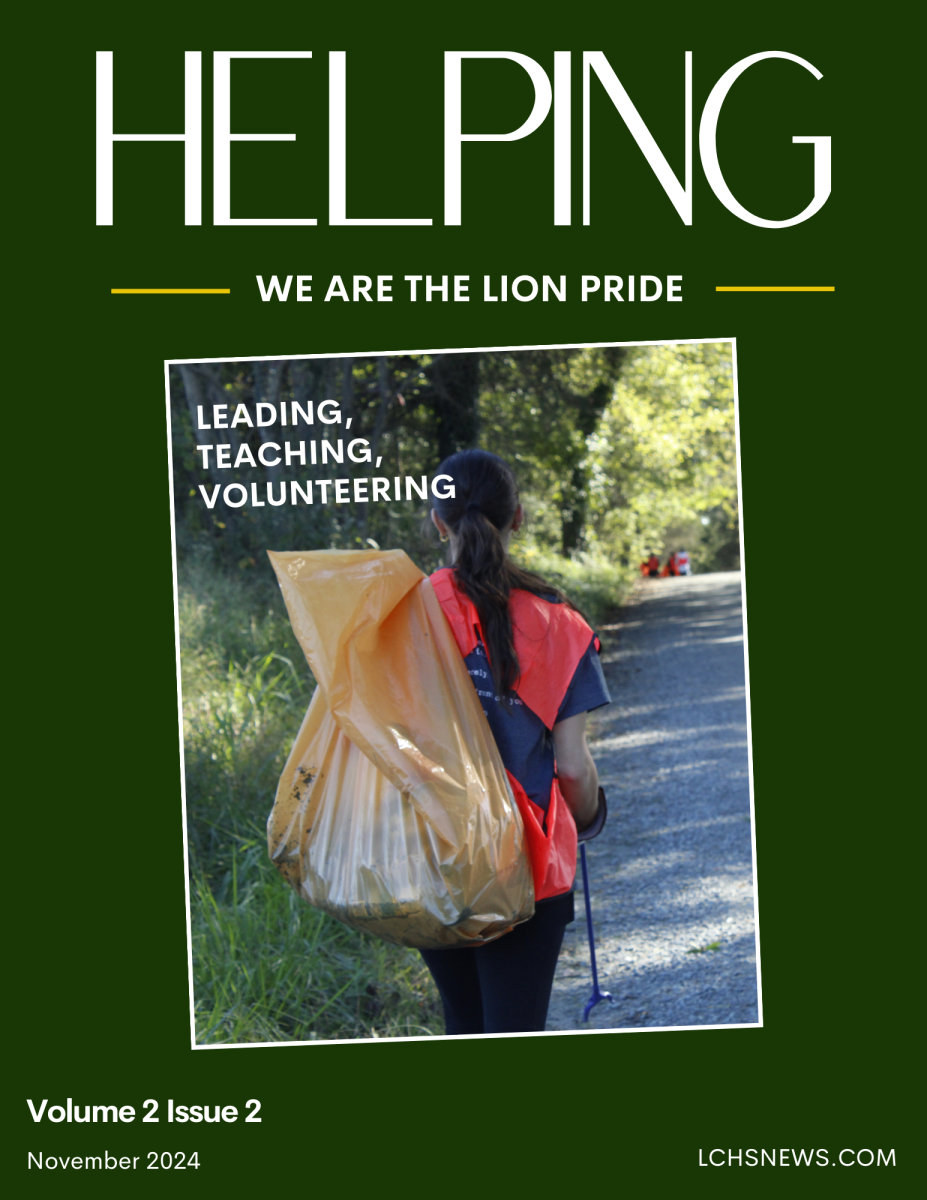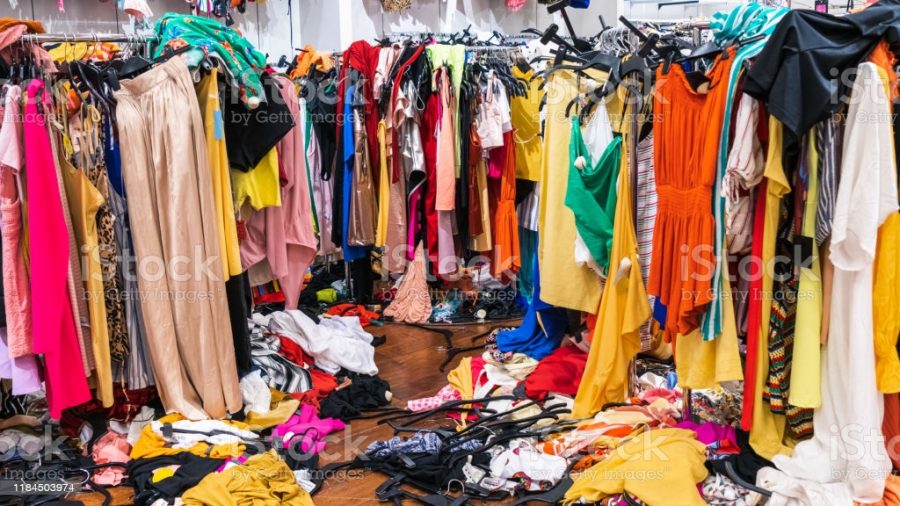The harmful effects of Fast Fashion
An example of Fast Fashion producing too many clothes that end up being wasted.
December 2, 2021
Fast fashion describes trendy clothing with mediocre quality that is mass-produced at a low cost. It makes impulse buying easy and affordable. Some of the popular “fast fashion” brands include Shein, Zara, and Forever 21.
The click of a button on a website such as Shein may be good for the checking account but has harmful effects on the Earth. The fashion industry is the second largest polluter of clean water globally because they use cheap, toxic textile dyes that pollute water. The “disposability” of the clothing has also caused issues because it has created 9.5 million tons of waste each year.
Not only is the effect of fast fashion harmful for the planet, it also hurts millions of people who work in terrible conditions, including the lives of children. According to Sustain Your Style, 168 million children in the world are forced to work and because the fashion industry requires low-skill, it is very common that children work in the industry. The average clothing worker works 96 hours a week. The minimum wage for these workers is half, or even as low as a fifth of the living wage needed in their country. With a world average of $470 per month.
Social media has helped propel a quick moving trend cycle into hyper speed. The popular app Tik Tok is well known for this. Its short videos and endless scrolling allows users to watch hundreds of videos a day. In many instances, influencers make people want to buy clothes that they wear. However, due to it’s expensive price tag, companies will often copy the design and come out with a cheaper, and less ethical version. For example, the Hockney Dress for a UK based store House of Sunny. First spotted on Kylie Jenner, the dress gained popularity on TikTok. However, because of it’s expensive price tag it spawned many cheaper options on websites like Amazon.
These trends benefit from a certain formula. They stand out in some way, whether it be bright colors or fun patterns. However, they are so out of the norm that they quickly lose their appeal. They’re stylish and unique but in a generic way, which is often their downfall. Once everyone has an item, it is no longer appealing because it has lost all of its individuality. What was interesting and trendy is now outdated and thrown to the back of the closet or in a landfill.
Fortunately, this has not gone unnoticed. Many people have taken the initiative to avoid fast fashion, like renting clothes for parties or events, thrifting, repairing damaged clothes , and shopping sustainably.
“I like to avoid buying from fast fashion clothing by shopping second-hand and thrifting. My favorite places to buy clothes are Depop, Uptown Cheapskate, Buffalo Exchange, Salvation Army, and Goodwill,” senior Olivia Backer said.
For a product to be sustainable, it must be able to be produced or consumed in a way that isn’t harmful or destructive. If the product requires nonrenewable resources, hurts the environment, or harms individuals or society, then it will most likely not be considered sustainable. Labels that say a product is made from recycled or renewable resources, biodegradable, or was manufactured using ethically sourced labor generally means the product is sustainable.
When shopping for sustainable clothing be aware of greenwashing. Greenwashing is a strategy that companies use to make their items appear more environmentally friendly. This may include making false claims about their production process or being purposefully vague with facts. Many stores have used this tactic including H&M in 2019.
Customers are not purposely buying clothes to harm the Earth. Society needs clothes and the pressure of social media and other classmates’ outfits can cause students to feel they need to wear a certain style. Fast fashion companies use this to their advantage, since most teenagers can not afford high-priced clothing.
The future of fashion relies on the back of these big corporations. A big change needs to be made, and customers can help influence this change by choosing to buy from sustainable brands or thrifting. Transparency of products is key and an important aspect in choosing clothing. Next time, before feeling threatened about a price tag of a sustainably made product, think of the hurt that is caused with every click on fast fashion websites.































































